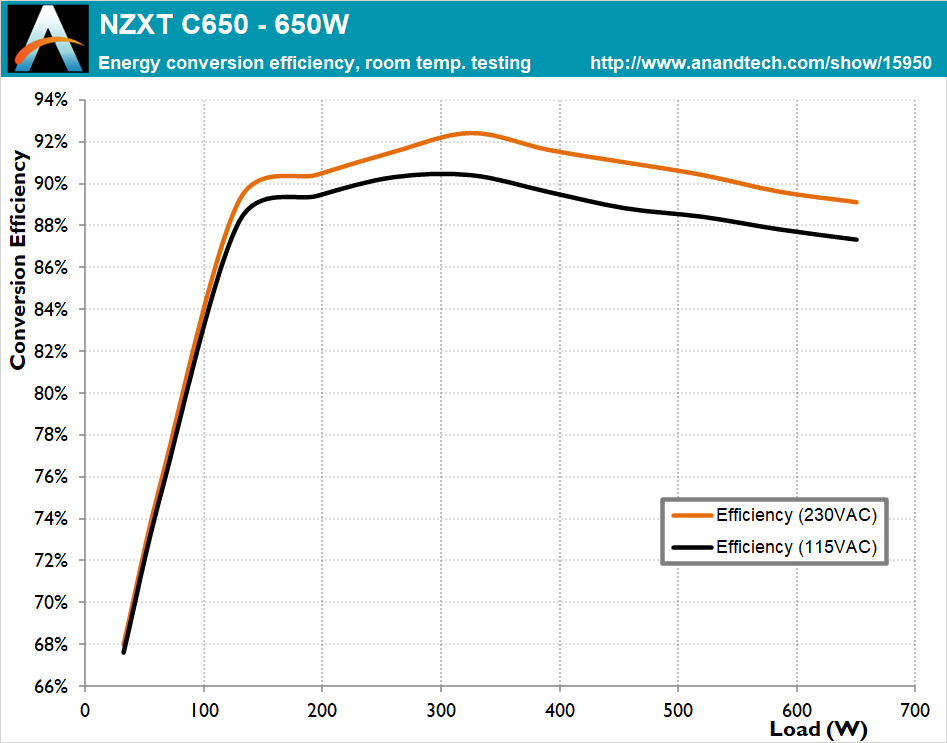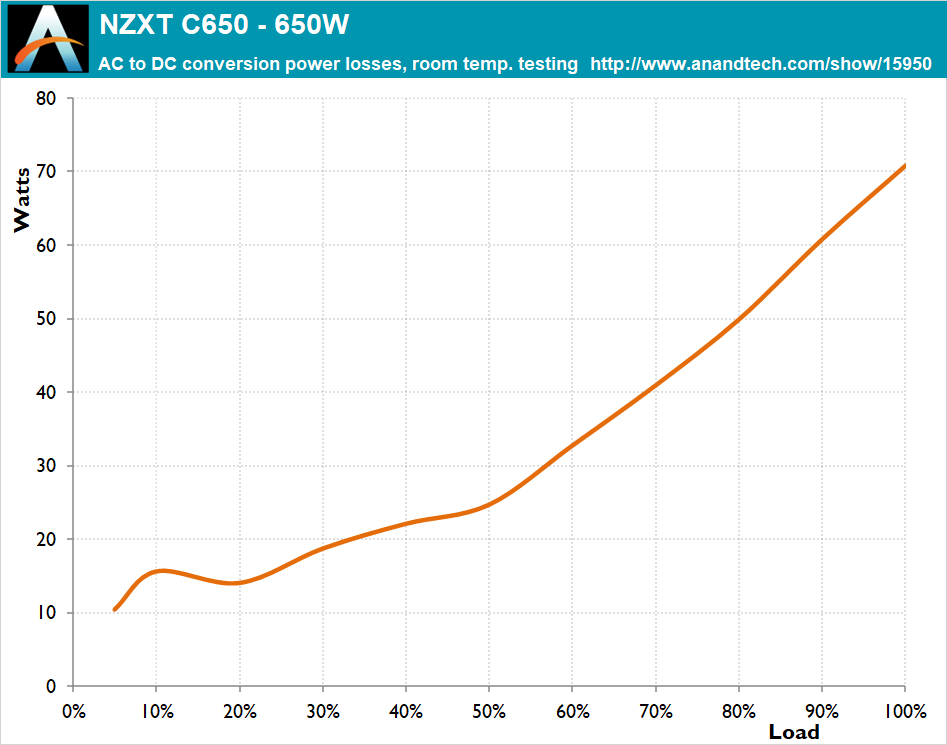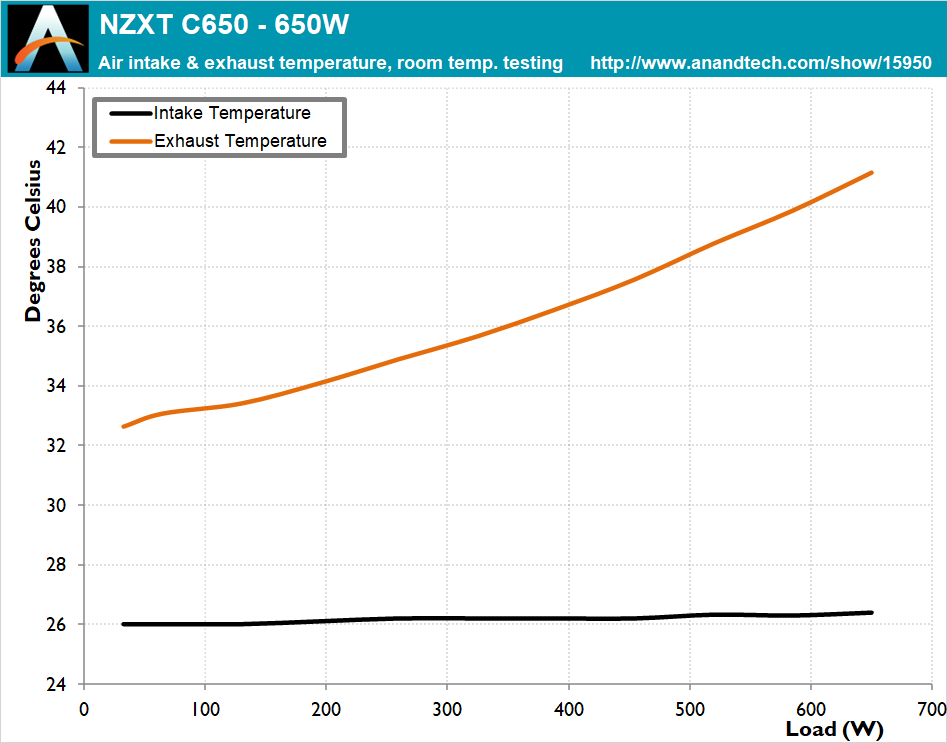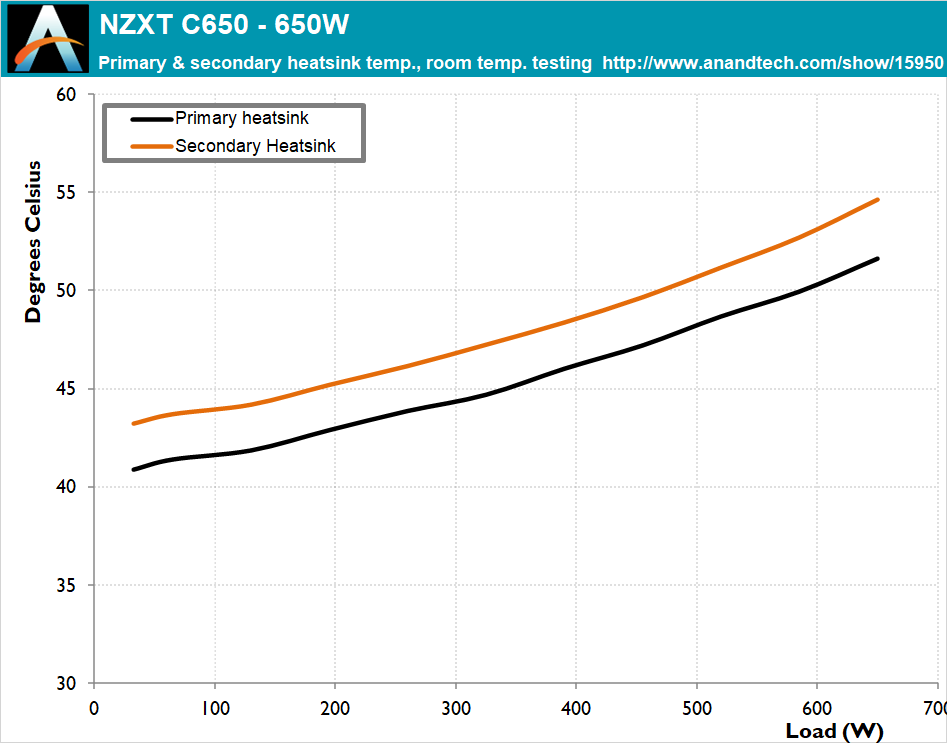The NZXT C650 650W PSU Review: Designed To Last
by E. Fylladitakis on August 11, 2020 8:00 AM EST- Posted in
- Cases/Cooling/PSUs
- PSUs
- 80Plus Gold
- NZXT
- 650W
- Modular
Cold Test Results
For the testing of PSUs, we are using high precision electronic loads with a maximum power draw of 2700 Watts, a Rigol DS5042M 40 MHz oscilloscope, an Extech 380803 power analyzer, two high precision UNI-T UT-325 digital thermometers, an Extech HD600 SPL meter, a self-designed hotbox and various other bits and parts. For a thorough explanation of our testing methodology and more details on our equipment, please refer to our How We Test PSUs - 2014 Pipeline post.
From the above charts, we can see that the NZXT C650 meets the 80Plus Gold certification requirements when powered from either a 230 VAC or 115 VAC outlet, even if only barely. It almost missed the certification requirements at 20% load and we can see that the efficiency of the PSU plummets as the load decreases, dropping well below 70% when the load is lower than 35 Watts. When the load drops below 20%, the efficiency drops so much that the raw power losses increase – a very rare effect. Apparently, this platform is not designed to cope with loads much lower than those intended.
We tested the NZXT C650 with its hybrid fan mode disabled, meaning that the fan was running at all times. In that scenario, the fan only became noticeable when the load ws greater than 320 Watts, and remained barely audible for loads up to 450 Watts. It eventually reached 42.9 dB(A) under maximum load, a passable noise figure for most users, and a great result from a PSU that is using a 120 mm fan. Considering that a PSU should never run at maximum load for prolonged periods of time, the NZXT C650 should be unnoticeable if installed inside a well-ventilated case.















34 Comments
View All Comments
qlum - Tuesday, August 11, 2020 - link
While they generally do have the extra 4 pin, actually plugging it in is completely optional unlike the extra connector on gpu's. In terms of power requirements it's also completely unnecessary to use it. The extra 4 pin is mostly the motherboard manufacturer showing look at our beefy vrm rather then actual need.MrVibrato - Tuesday, August 11, 2020 - link
No. Your AM4 CPU doesn't require 8+4. It's called gamer street cred.Wait...
Is it even possible for gamers to have street creds?
MrVibrato - Tuesday, August 11, 2020 - link
Darn... wrong reply button... was supposed to be a reply to Amoro's post...eek2121 - Tuesday, August 11, 2020 - link
I wouldn’t say most. The more affordable boards do not. My board has a single 8 pin. Anything above and beyond that is a gimmick.ArmedandDangerous - Tuesday, August 11, 2020 - link
You only need the 1 8 pin. Anything extra is for much more exotic overclocking the majority of people will never need.PenGunn - Tuesday, August 11, 2020 - link
As always, just get the Seasonic that fits your purpose.eek2121 - Tuesday, August 11, 2020 - link
I accidentally bought a Seasonic PSU thanks to Amazon’s infuriating inability to do a proper search. Still trying to decide whether to keep it or return it.evilspoons - Tuesday, August 11, 2020 - link
Small nitpick on the "Main Output" table on the Hot Test Results page. At 20% you read 5.05 V, at 50% you read 5.01 V, and at 100% you read 4.97 V. All two decimals of precision. However, at 75% load it's just listed as "5 V". Shouldn't that be "5.00"?fred666 - Tuesday, August 11, 2020 - link
What's the point of being 100% modular? Is someone really going to use this without the main ATX motherboard connection?It looks nice in the box, but I don't see any real-world advantage.
eek2121 - Tuesday, August 11, 2020 - link
The cables can easily be replaced. For example, cablemod allows you to purchase custom length cables. Also, what if a connector or cable breaks?